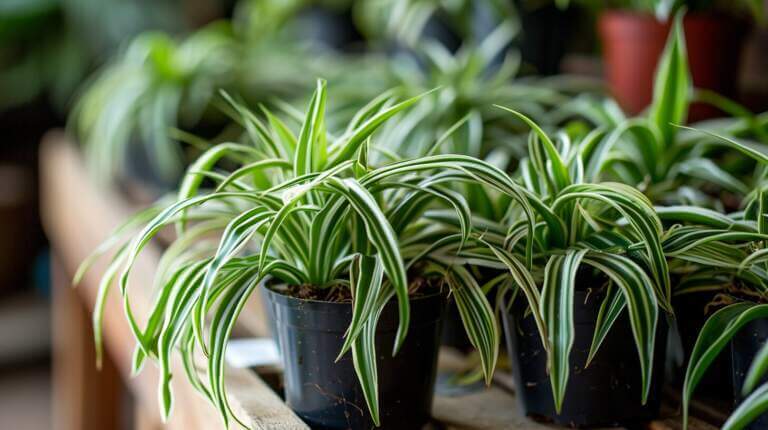Comprehensive Cast Iron Plant(Aspidistra Elatior) Care Guide for Beginners
The cast iron plant, also known as Aspidistra elatior, is a hardy houseplant that requires minimal care. It can tolerate low light conditions and irregular watering, making it perfect for beginners. In this comprehensive care guide, you will learn how to nurture your cast iron plant into a lush indoor oasis. We will cover topics such as light requirements, watering needs, soil conditions, temperature and humidity preferences, fertilization, growth rate, pests and diseases, pruning, propagation, potting and repotting, and different types of cast iron plants. By following these care instructions, you can ensure that your cast iron plant thrives and remains a beautiful addition to your indoor space.
Key Takeaways:
- Cast iron plants, also known as Aspidistra elatior, are hardy houseplants that require minimal care.
- They can tolerate low light conditions and irregular watering, making them perfect for beginners.
- Proper watering, soil conditions, temperature, and humidity preferences are essential for their growth.
- Regular fertilization, pruning, and pest control measures will help maintain a healthy cast iron plant.
- Propagation and potting techniques can be used to expand your cast iron plant collection.
Light Requirements for Cast Iron Plants(Aspidistra Elatior)
Cast iron plants are highly adaptable when it comes to light conditions. They can tolerate low, medium, or bright indirect light. However, it is important to avoid direct sunlight as it can burn the delicate leaves. Variegated types of cast iron plants require at least 6 hours of indirect light to maintain their vibrant light stripes. Placing your cast iron plant in a north-facing window or in a location with filtered light will ensure optimal growth.
To summarize:
- Cast iron plants can tolerate low, medium, or bright indirect light.
- Avoid direct sunlight to prevent leaf burn.
- Variegated cast iron plants need at least 6 hours of indirect light for vibrant stripes.
- Place your cast iron plant in a north-facing window or in a location with filtered light.
Table: Light Requirements for Cast Iron Plants
| Light Conditions | Tolerance |
|---|---|
| Low Light | Tolerant |
| Medium Light | Tolerant |
| Bright Indirect Light | Tolerant |
| Direct Sunlight | Avoid |
| Variegated Types | 6 hours of indirect light |
Watering and Soil Requirements for Cast Iron Plants
Proper watering and soil conditions are crucial for the health and vitality of cast iron plants. Understanding the specific needs of these resilient houseplants will ensure their longevity and lush growth. In this section, I will guide you through the watering techniques and soil requirements to keep your cast iron plant thriving.
Watering
Cast iron plants prefer slightly dry soil between waterings to prevent overhydration. It’s best to allow the top inch of soil to dry out before watering again. Overwatering can lead to root rot and cause harm to the plant. To water your cast iron plant, thoroughly saturate the soil until water starts to drain from the bottom of the pot. Avoid leaving the plant sitting in excess water, as this can lead to waterlogged soil. It’s essential to strike a balance between providing adequate moisture and ensuring proper drainage for healthy root development.
Soil Requirements
Well-drained soil is crucial for the optimal growth of cast iron plants. A mix of potting soil and amendments such as pumice, perlite, or wood chips can help improve drainage. These additions enhance the soil’s ability to retain moisture, preventing waterlogged conditions. The enhanced drainage also helps prevent root rot and other water-related issues. When choosing potting soil, opt for a well-balanced mix that provides adequate nutrients while allowing excess water to flow freely.
| Advantages | Disadvantages | |
|---|---|---|
| Pumice | – Improves drainage – Provides aeration for roots | – Can be difficult to find in stores |
| Perlite | – Enhances soil drainage – Lightweight and easy to handle | – May float to the soil surface over time |
| Wood chips | – Improves soil structure – Enhances drainage and aeration | – Decomposes over time and may require regular replacement |
Temperature, Humidity, and Fertilization for Cast Iron Plants
When it comes to the temperature range for cast iron plants, they thrive in average room temperatures that typically range from 65 to 85 °F. These plants are known for their ability to withstand lower temperatures, making them suitable for various indoor environments. However, it’s important to note that if kept below 50 °F, the growth rate of cast iron plants may slow down. Therefore, maintaining a temperature within the recommended range ensures optimal growth and development.
While cast iron plants are not particularly sensitive to humidity levels, they do appreciate slightly higher humidity if possible. This is especially true during the dry winter months when indoor humidity tends to be lower. To increase humidity, you can use common methods such as placing a water-filled tray near the plant or using a humidifier in the room. By providing slightly higher humidity, you can create a more favorable environment for your cast iron plant.
Fertilization is an essential aspect of caring for cast iron plants, as it promotes healthy growth and foliage. During the growing season, which typically spans from spring to early fall, you can fertilize your cast iron plant to encourage new growth. Use a diluted complete liquid fertilizer or organic options like seaweed or fish emulsion. Remember to follow the instructions provided by the manufacturer to avoid overfertilizing, which can lead to salt buildup in the soil. It’s important to note that during the plant’s dormant period, which is typically during the colder months, fertilization is not necessary.
Pests and Diseases of Cast Iron Plants
When it comes to caring for cast iron plants, it’s important to be aware of potential pests and diseases that can affect their health. While these plants are generally resistant, certain issues can arise if the conditions aren’t optimal. The most common pests that can infest cast iron plants are scale, spider mites, and mealy bugs. These tiny insects can cause damage to the leaves and stems, leading to a decline in the plant’s overall appearance. To treat these pests, a spray of lukewarm water can be used to knock them off. In more severe cases, horticultural oil or insecticidal soap can effectively eliminate the infestation.
Another issue that can arise is root rot, which is caused by overwatering or improper drainage. When the roots of the cast iron plant sit in waterlogged soil for extended periods, they can become susceptible to rot. To prevent root rot, it’s essential to use pots with drainage holes and well-drained soil. Regularly monitor the moisture levels and adjust your watering practices accordingly. If you suspect root rot, it’s crucial to address the issue by adjusting the watering schedule and improving the drainage to save your cast iron plant.
“Pests and diseases can be a nuisance for cast iron plant owners, but with proper care and attention, these issues can be easily managed,” says gardening expert Jane Thompson. “Regularly inspecting your plants for any signs of infestation or disease is key to preventing further damage and ensuring the longevity of your cast iron plants.”
Treatment for Pests and Diseases
When dealing with pests and diseases in cast iron plants, it’s important to take prompt action to prevent further damage. Here are some treatments for common issues:
- Scale: Use a cotton swab dipped in rubbing alcohol to remove the scales from the leaves and stems.
- Spider Mites: Spray the plants with a mixture of water and insecticidal soap, making sure to cover the undersides of the leaves.
- Mealy Bugs: Use a cotton swab soaked in rubbing alcohol to remove the bugs from the plant. Repeat the process every few days until the infestation is gone.
- Root Rot: If you suspect root rot, remove the plant from the pot and inspect the roots. Trim away any rotting or mushy parts and repot the plant in fresh, well-draining soil.
By being proactive and providing the right care, you can ensure that your cast iron plants remain healthy and vibrant, free from the damaging effects of pests and diseases.
| Pests and Diseases | Treatment |
|---|---|
| Scale | Remove scales with a cotton swab dipped in rubbing alcohol |
| Spider Mites | Spray with a mixture of water and insecticidal soap |
| Mealy Bugs | Remove bugs with a cotton swab soaked in rubbing alcohol |
| Root Rot | Remove affected roots, repot in fresh, well-draining soil |
Propagation and Potting/Repotting of Cast Iron Plants
When it comes to propagating cast iron plants, division is the key. Once your plant has grown and needs to be repotted, gently separate the rhizomes and replant them in individual containers. It’s essential to choose a healthy plant with robust leaves and minimal signs of pests or diseases.
For successful propagation, use pots with drainage holes and well-drained soil. This will ensure that your cast iron plant has the optimal growing conditions it needs to thrive. Additionally, you can add soil amendments like pumice, perlite, or wood chips to improve drainage and promote healthy root development.
Establishing a care routine is crucial for the well-being of your propagated plants. Monitor their growth closely and adjust your watering and light requirements accordingly. Wiping the leaves with a damp cloth periodically and checking for pest infestations should also be part of your regular care routine.
FAQ
How do I care for a cast iron plant?
Cast iron plant care involves placing the plant indoors where it can get indirect sun. The plant prefers a potting mix that is well-draining. Water the plant when the top inch of soil is dry and keep your plant away from direct sun to prevent leaf burn.
How do I propagate a cast iron plant?
To propagate a cast iron plant, you can divide the plant at the base during repotting. Each division should have a piece of the root system to grow a new plant.
How often should I fertilize my cast iron plant?
Fertilize your cast iron plant during the growing season (spring and summer) with a balanced houseplant fertilizer. Follow the instructions on the fertilizer package to avoid over-fertilizing, which can lead to plant problems.
How do I grow a variegated cast iron plant?
A variegated cast iron plant requires similar care to the common plant but needs more light to maintain its variegation. However, avoid direct sun as it can scorch the leaves.
How do I care for the leaves of my cast iron plant?
The leaves of your cast iron plant can be gently wiped with a damp cloth to remove dust. This not only keeps the plant looking its best but also helps it photosynthesize more efficiently.







